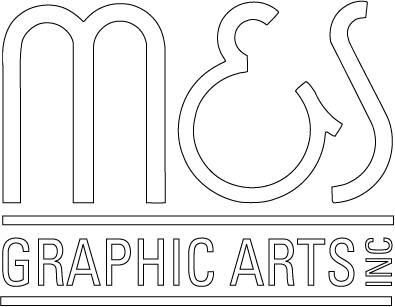Printing 101
We want your project to come out perfect, which means some prep work before it goes to print. Here's how to make sure your designs look their best when put to paper.
Colors and Files
Inkjet and laserjet printers use four colors of ink: Cyan, magenta, yellow, and black, also knows as CMYK. Think of these as new-and-improved versions of blue, red, and yellow that you used during school to make any color.
That means any images and graphic files you want to print must be saved in CMYK color mode so the file tells the machines the right color combinations.
Not sure what this means? We can help you with your files.
Bleeds and Margins
When setting up a file to print, it's important to leave a bit of space, or a margin, around the edges so the printer doesn't cut off pieces of the design. Why would it do that? Printers don't actually print all of the way to the edge of a piece of paper.
We use the word bleed to describe when imagery and ink will hit the edges or extend beyond. So if you have a design where something needs to bleed to the edge, we print it on a larger sheet of paper and then cut it back down to size.
Resolutions
Have you ever printed a picture from the Internet only to discover it's clear on your screen, but blurry on paper?
That's because the image doesn't have a high enough resolution to work on paper.
Resolution is also called DPI, or Dots Per Inch, which is exactly what it sounds like. The ideal DPI for printed materials is 300, or 300 teeny dots of ink per square inch of image. If you have 72 DPI, what your monitor is, then you have larger dots of ink that blur together.
Make sure all of your artwork is at least 300 DPI and at minimum the size it would be printed. For example, a picture printed to be 4 x 6 inches large should be at least 4 x 6 inches at 300 DPI on the computer.


